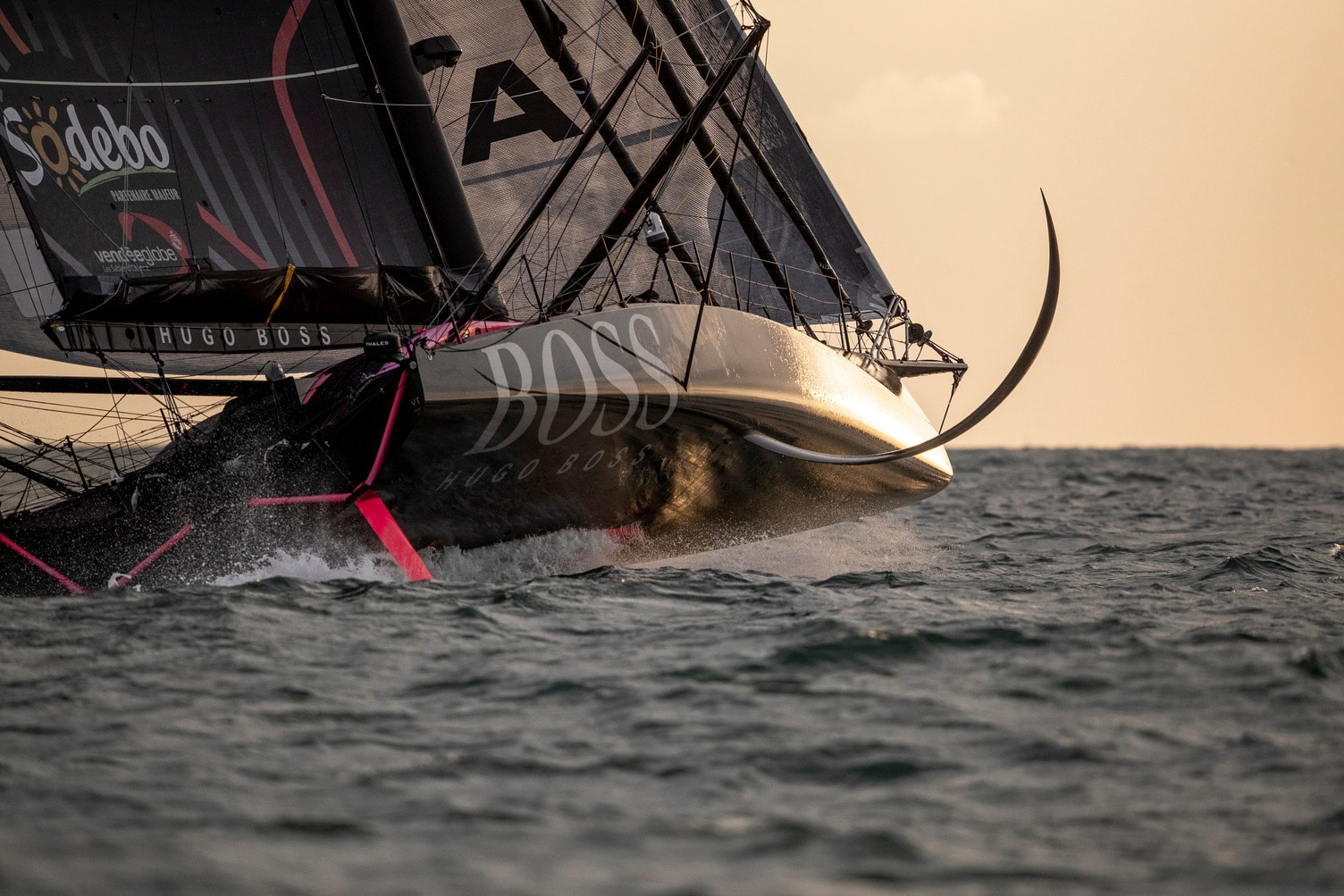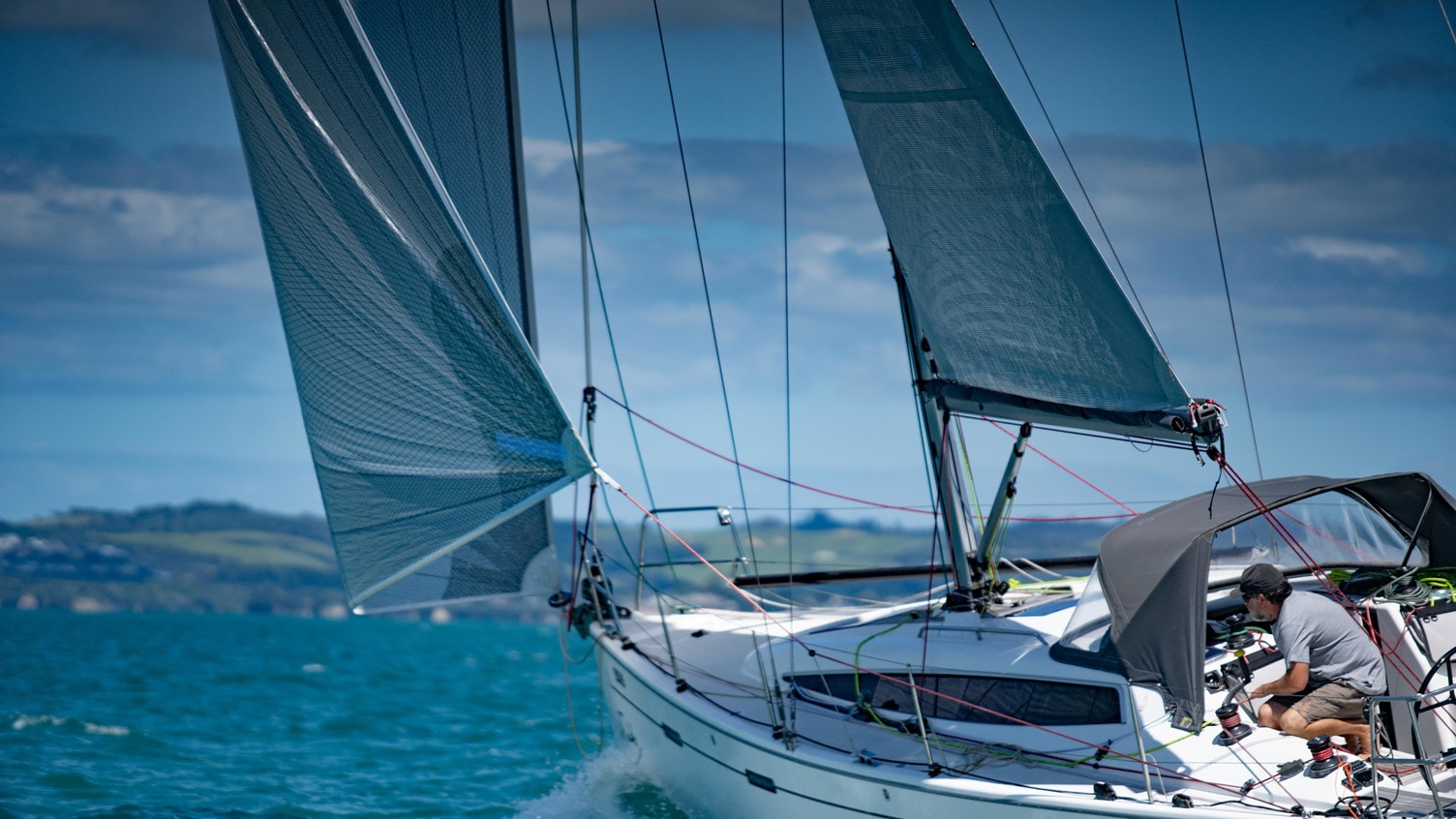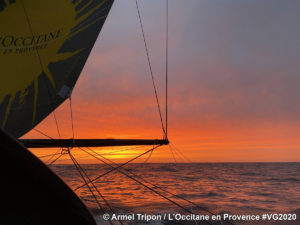Doyle Sails adapts Vendée Globe technology for leisure sails

According to Peter Greenhalgh, who heads up grand prix sales for Doyle Sails Solent, ‘lots of people’s boats are underperforming’. He suggests some sailors are reluctant to harness the full power of their sails, citing cruisers who just run a main and jib. But he says new technology which is filtering down from elite performance classes is changing all that.
Doyle Sails has been working with Alex Thomson Racing for the past eight years. It’s a good fit, as Greenhalgh says, because both are like minded – they’re at the top of their games, keen to develop technology and push boundaries. Notwithstanding Thomson’s latest misfortune, the relationship pushes technology forward quickly and has given racers, and the wider marine leisure market, cableless and structured luff technology.
Greenhalgh explains that cableless technology eliminates the use of torsion cables with the load taken along the sail’s natural load path instead of requiring many tons of cable tension to try and keep the luff tight. This results in more luff projection, more drive force, less load, and less weight.
Initially designed as a concept to redefine and test the boundaries of traditional cabled code sails, Doyle Sails says cableless sails have been winning all over the world. A similar structured luff technology is now being applied to headsails and staysails.
“The IMOCA mast is inherently stiff and hard to bend,” Greehhalgh explains. Cableless tech is a big part of that sail development programme, which Thomson transferred into his mainsail as well.
Everything Doyle Sails does with Thomson, Greenhalgh says, is about “making a sail go through a range better. Getting it to power-up earlier in lighter winds or de-power quickly in strong winds is key. We make sails as light a possible while also being strong.
“Reliability is everything. He couldn’t afford to break a sail on his way round the world. His sails were subtly tweaked here and there in fit, and the shape moulding tweaked ever so slightly. It was all tried and tested extensively.
“We did go a little lighter on some weights of items, those tweaks took into account his new boat’s performance.”
Before this edition of the Vendée Globe began, Thomson cited his cableless Doyle sails as ‘unbeatable’ for downwind.

Although Greenhalgh is quick to point out that ‘none of it is rocket science’, Doyle Sails’ cableless and structured luff technology is also being introduced on Oysters, Discovery yachts and J-Boats.
“Cableless technology that applies to a range of code sails [highly specialised downwind sails] benefits performance cruisers. Getting rid of the cables reduces weight, expenses and space – the sails fit in smaller lockers. It’s all lighter and is a huge gain for every sailor.
“Literally the same stratis technology that is being used on an Oyster performance cruising boat is onboard Hugo Boss. When heavier yachts, like an Oyster, move into cableless technology, loads can reduce by 20-30% and we have seen load reductions of up to 50% in some cases.”
There are adaptations, but as Greenhalgh says, “Alex’s sails are built to survive going round the world single handedly, relentlessly, for 80 days and that’s more use than a cruiser would give them in six or seven years.
“Lots of people with cruising boats just run the main and jib with spinnakers. That’s often tough to handle shorthanded. In most cases, using cableless sails means we’ve gone from boats not being able to use a sail like a spinnaker, but now boats can handle it.
“Simplified cableless tech means guys who are inexperienced can now hoist a furled sail, unfurl, deploy and blast along. When things get hairy, they pull the line and lower it down and it’s easy.
“People know furling, they know that it works. It’s opened up another sailing avenue.
“Lots of people’s boats are underperforming, going along at 5/6 knots. If they have a nice furling code zero, it’ll pull you along at 2 knots more, which gets you into harbour two hours earlier.
“None of this is particularly revolutionary, it’s all straightforward, but it does the job,” Greenhalgh says.











